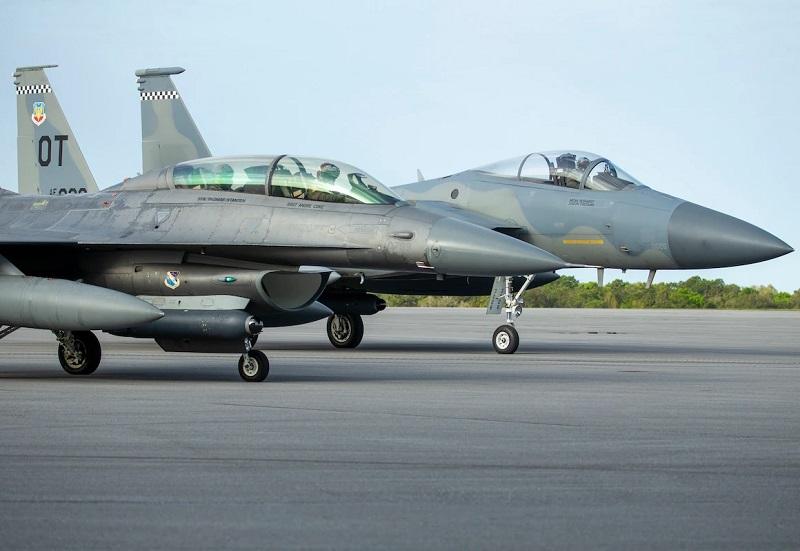Eglin’s Integrated Test Team conducted the first-ever multi-platform operational test to effectively locate a target using shared Infra-Red Search and Track sensor data, Apr. 7, 2022. An F-15C Eagle and F-16 Fighting Falcon, both equipped with Lockheed Martin’s Legion Pod, used the IRST21 infrared sensor to detect a target. The aircraft were then able to share that sensor data over the Legion pod’s Advanced Datalink to passively triangulate target position without the use of radar or other active ranging sources. The Legion Pod’s common interface allows integration onto any aircraft with minimal to no impact on the aircraft’s core software. This versatility opens the door for integration with minimal effort onto other fighter aircraft like the Air Force’s newest fighter, F-15EX.

“IRST technology provides a key enabler in the long-range kill chain as well as the ability to locate targets in a multispectral domain. Any large-force scenario includes multiple aircraft types, each with different viewpoints of the battlespace. The ability to share data provides information to the warfighter they would not be able to get otherwise. Our next step will be to explore the operationally relevant capabilities that IRST with an advanced datalink provides the warfighter.The eventual goal is to provide this capability to anyone carrying an ADL Legion pod, regardless of platform,” said Lt Col. Jeremy Castor, Operational Flight Program Combined Test Force F-16 sensors program manager.

The first successful 2-ship F-15 IRST ADL test occurred at Northern Edge in April 2021, with the first successful 2-ship F-16 IRST ADL test occurring this past December 2021 at Eglin AFB. The successful completion of this F-15/F-16 Multi-Mission Design Series IRST test on April 7 marks a milestone event in the program’s ongoing progress. The two-week combined test team event was led by a collaborative effort between the OFP CTF, the 85th Test and Evaluation Squadron, the 40th Flight Test Squadron, Lockheed Martin Missiles and Fire Control, and the Air National Guard Air Force Reserve Command Test Center F-15C Eagle Division. The 53rd Wing provides tactical advantage to the warfighter at the speed of relevance.

The IRST pod, known as the Legion Pod, is a sensor that uses the infrared spectrum to help pilots to track and engage enemy aircraft in environments, where traditional radar technology is denied. The pod also provides a way of monitoring enemy aircraft from extended ranges that normally go undetected, boosting the effectiveness of the F-15C and its ability to dominate the battlespace. the Legion Pod can accommodate additional sensors within its structure, making the task of integrating new capabilities possible with minimal aircraft modifications. The versatility and adaptability of the pod design provides for integration on other fighter aircraft such as the F-16 Fighting Falcon and F-15EX.













